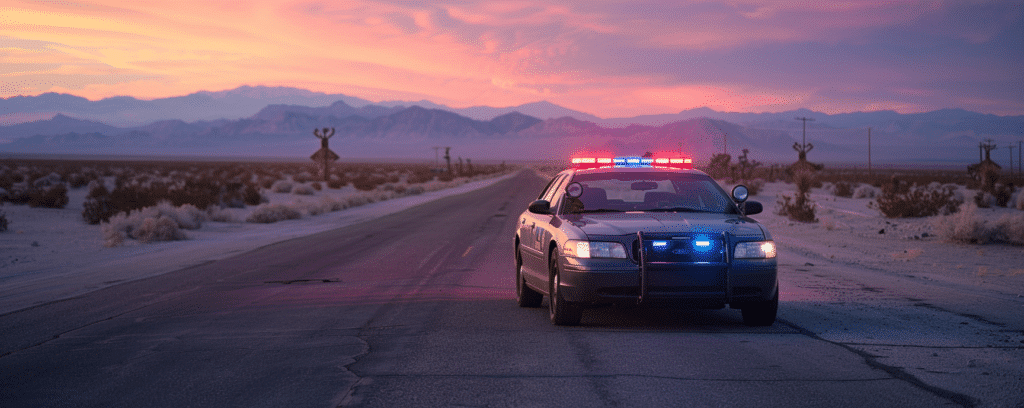
Myth or Fact: Do Pedestrians Have the Right of Way in Traffic Scenarios?
When it comes to navigating streets, ‘do pedestrians have the right of way?’ isn’t a question with a universal yes or no. Regulations can shift depending on numerous factors we’ll uncover in this article, ensuring you step onto the street equipped with the right knowledge to keep you safe and within the bounds of the law.
Key Takeaways
- Pedestrians do not always have the right of way; various scenarios dictate whether pedestrians or vehicles have priority, and both parties must be aware of and respect traffic rules to ensure safety.
- Crosswalks, both marked and unmarked, legally provide pedestrians with the right of way, emphasizing the importance of driver awareness and pedestrian safety at these crossings.
- Comparative negligence laws mean that fault in pedestrian-vehicle accidents can be shared between the pedestrian and the driver, affecting the compensation for damages that can be recovered by the pedestrian.

Understanding Right of Way: Pedestrians vs. Motor Vehicles
Stepping onto a busy street can sometimes feel like stepping into a battlefield. Cars, buses, trucks, motorcycles, bicycles, and pedestrians all vying for space. But who has the legal right to proceed first? This is where the concept of the right of way comes in. It refers to the legal right to proceed before others in traffic scenarios. While it might seem like a basic concept, the reality is often more complex.
Contrary to popular belief, pedestrians do not always have the right of way. Drivers are typically required to yield the right of way to pedestrians, but there are exceptions. For instance, at intersections without STOP or YIELD signs, vehicles already in the intersection or arriving first have the right of way. Also, when two vehicles reach an intersection simultaneously, the one on the right typically has the right of way. This demonstrates why being vigilant and comprehending road rules is crucial for both drivers and pedestrians.
To further complicate matters, vehicles turning left must yield the right of way to pedestrians and oncoming vehicles that pose a potential hazard. At marked and unmarked crosswalks, drivers are required to stop and yield the right of way to pedestrians. Moreover, drivers must not pass vehicles that are stopped at crosswalks as they may be yielding to pedestrians crossing the street. This emphasizes the pivotal role of being aware and respecting the right of way to avoid pedestrian vehicle accidents.
The Truth About Crosswalks: Marked and Unmarked
Crosswalks are a common feature of city streets, providing designated areas for pedestrians to cross safely. But not all crosswalks are created equal. There are two types: marked and unmarked. A marked crosswalk is clearly visible with painted lines or signs, whereas unmarked crosswalks are typically found at intersections without painted lines or signage. Despite the lack of distinct markings indicating their presence, unmarked crosswalks still legally provide right-of-way protections to pedestrians similar to those at a marked crosswalk.
Whether crossing in a marked or unmarked crosswalk, pedestrians have the right of way, and it is the responsibility of the driver to yield at these designated locations. This stresses the significance of pedestrian safety at crosswalks and underlines the need for both pedestrians and drivers to remain alert and respectful of each other’s rights and responsibilities.
Traffic Control Signals and Pedestrian Safety
Beyond crosswalks and intersections, traffic control devices such as traffic lights and pedestrian signals play a vital role in maintaining safety for both pedestrians and drivers. These devices dictate when pedestrians are given priority to cross roadways, emphasizing the need to obey traffic signals for safety. But simply obeying signals is not enough. Safety is a shared responsibility, and drivers and pedestrians must work together to ensure it, especially when traffic control signals are in effect.
Green Light Protocol
When it comes to green lights at intersections, some might assume it’s an all-clear signal for vehicles to proceed. However, the reality is slightly different. Drivers approaching intersections with green lights are expected to yield to pedestrians crossing within any marked crosswalks. This means that even if the light is green, drivers must prioritize pedestrian safety.
Additionally, when drivers have a green light, they must yield to pedestrians within the crosswalk who are crossing the street they are turning into. Even though drivers are obligated to yield to pedestrians at green lights, pedestrians should stay alert at intersections. Pedestrians should only proceed with crossing at a green light when the walk signal is constantly lighted, and not start crossing during a flashing ‘Don’t Walk’ signal or enter the roadway during a constantly lighted ‘Don’t Walk’ signal.
Walk Signal Guidelines
Walk signals are another key traffic control device that pedestrians must heed. These pedestrian signal heads provide the authoritative signal for pedestrian movement and override regular traffic signal heads. They indicate the legally appropriate times to cross streets, and pedestrians must adhere to them.
To cross at a signalized intersection, pedestrians should press the push button where available and proceed only on a walking person symbol, not on a flashing or steady ‘don’t walk’ symbol. A ‘Walk’ signal, either steady or flashing, implies pedestrians may proceed, whereas a steady ‘Don’t Walk’ signal requires pedestrians to wait and not enter the crosswalk. However, there are exceptions.
Some regions permit pedestrians to initiate crossing during a flashing ‘Don’t Walk’ signal, contrary to the prevailing practice across most of North America.
When Pedestrians Must Yield
While we’ve established that pedestrians generally have the right of way in many scenarios, there are instances where they must yield. One such instance is jaywalking, where a pedestrian crosses the road unlawfully, often in a dangerous manner and not at a crosswalk. Pedestrians can be found partially at fault for an accident if they engage in jaywalking, cross against signals, or enter prohibited areas.
This emphasizes the significance of both the pedestrian and driver responsibility in avoiding accidents. Just as drivers are expected to yield to pedestrians in certain situations, pedestrians are also expected to follow the rules of the road, including obeying traffic signals and using pedestrian crossing at designated areas to ensure their own safety and that of others.
Contact us today and we will help you get the compensation that you deserve.
Navigating Intersections and Roundabouts
Intersections and roundabouts are common traffic scenarios where pedestrian and vehicle paths intersect. Understanding how to navigate these areas is crucial for both pedestrian and vehicle safety. Here are some important rules to remember:
- At roundabouts, traffic must navigate in a counterclockwise direction.
- Vehicles within the roundabout have the right of way over those attempting to enter.
- All drivers must yield to pedestrians already in the intersection.
In the event of an approaching emergency vehicle, drivers should exit at the nearest point of the roundabout before safely pulling over to allow the emergency vehicle to pass. This underlines the need for awareness and respect for traffic rules in complex traffic situations to guarantee pedestrian safety.
Legal Consequences of Pedestrian-Vehicle Accidents
Determining fault in pedestrian-vehicle accidents can be challenging due to ambiguous laws and insurance companies sometimes denying responsibility. In some cases, pedestrians can be found partially at fault for an accident. If a pedestrian is found responsible for causing an accident, they may be required to compensate the driver for losses, as pedestrian accidents often involve shared fault and the application of comparative negligence rules.
Injured pedestrians may file civil lawsuits against drivers to claim damages for medical expenses, lost wages, and pain and suffering. Survivors of a deceased pedestrian may pursue wrongful death lawsuits, seeking compensation for loss of support, companionship, and funeral expenses.
Furthermore, criminal charges for drivers involved in pedestrian accidents can range from hit and run to DUI, with potential penalties including incarceration, probation, restitution, license suspension, and fines. In extreme cases, vehicular manslaughter charges may be filed against drivers whose negligent, reckless, or unlawful vehicle operation results in a pedestrian’s death.
Recovering Damages After a Pedestrian Accident
Accidents can lead to significant physical, emotional, and financial burdens. Injured pedestrians may seek compensation for both economic and non-economic damages through a personal injury claim. However, establishing a strong claim requires showing that the accident and resulting pedestrian injured were caused by another party’s fault or negligence. This is often supported by evidence like:
- Police reports
- Photos
- Videos
- Witness statements
Medical records serve as evidence of injuries and are critical for substantiating a pedestrian injury claim. It’s important to seek medical attention even without immediate symptoms as some injuries have delayed manifestations.
Pedestrian injury lawsuits must be filed within a specified statute of limitations, and an experienced pedestrian accident lawyer can assist with the filing and negotiating process.
Steps to Take Following a Pedestrian Accident Scene
If you’re involved in a pedestrian accident, your immediate actions can have a significant impact on any future claims. First, ensure personal safety, check on the safety of others, and call 911. Stay at the scene to collect evidence like photos of the damage, skid marks, and traffic signals, since they can be crucial in proving the driver’s negligence.
Gather contact information from all parties involved, including the driver, passengers, and witnesses, to aid in the pedestrian accident claim. Document your recollections of the accident as soon as possible to establish a consistent and detailed account which will support the pedestrian injury claim. The evidence and documentation collected immediately after the accident play a pivotal role in building a strong personal injury claim for the pedestrian.
Ensuring Safety for Blind Pedestrians and Other Vulnerable Groups
The rules of the road are not only for the sighted. Pedestrians who are blind and use guide dogs or white canes are legally granted the right of way at all times. This legal provision ensures that blind pedestrians have priority regardless of other traffic signals or scenarios.
This underlines the significance of inclusivity in our traffic laws and the necessity for drivers to be particularly cautious when encountering blind pedestrians and other vulnerable road users. After all, the responsibility of safety lies with everyone on the road, not just the sighted.
Comparative Negligence: How Fault Is Shared
Accidents are often complex events with various factors contributing to their occurrence. Comparative negligence is a legal principle acknowledging that a pedestrian may share responsibility with a driver for an accident, challenging the common assumption that only drivers can be at fault.
In a traffic accident involving a pedestrian and a driver, comparative negligence laws determine the portion of fault that is attributable to each party. If found partly at fault, a pedestrian’s compensation for damages will decrease in proportion to their assigned percentage of fault in an accident. In many states, a pedestrian who is less than 50% responsible for an accident can still recover damages, although the amount received is diminished based on their percentage of fault.
However, pedestrians found to be more than 50% at fault in some states may be barred entirely from recovering damages.
Frequently Asked Questions
Do pedestrians always have the right of way?
Pedestrians do not always have the right of way, as there are exceptions such as intersections without STOP or YIELD signs and instances of jaywalking or crossing against signals. Always exercise caution when crossing roadways.
What is an unmarked crosswalk?
An unmarked crosswalk is typically found at intersections without painted lines or signage, but it still provides right-of-way protections to pedestrians similar to those at marked crosswalks.
Can pedestrians be held responsible for accidents?
Yes, pedestrians can be held responsible for accidents if they engage in unsafe behaviors such as jaywalking or crossing against signals. It’s important to follow pedestrian safety rules to avoid accidents.
What legal protections are in place for blind pedestrians?
Blind pedestrians using guide dogs or white canes have the legal right of way at all times, regardless of traffic signals.
What is comparative negligence?
Comparative negligence is a legal principle that acknowledges shared responsibility between a pedestrian and a driver in an accident, affecting the compensation received by the pedestrian. This means the compensation will decrease based on the assigned percentage of fault.
Last updated Tuesday, July 9th, 2024






